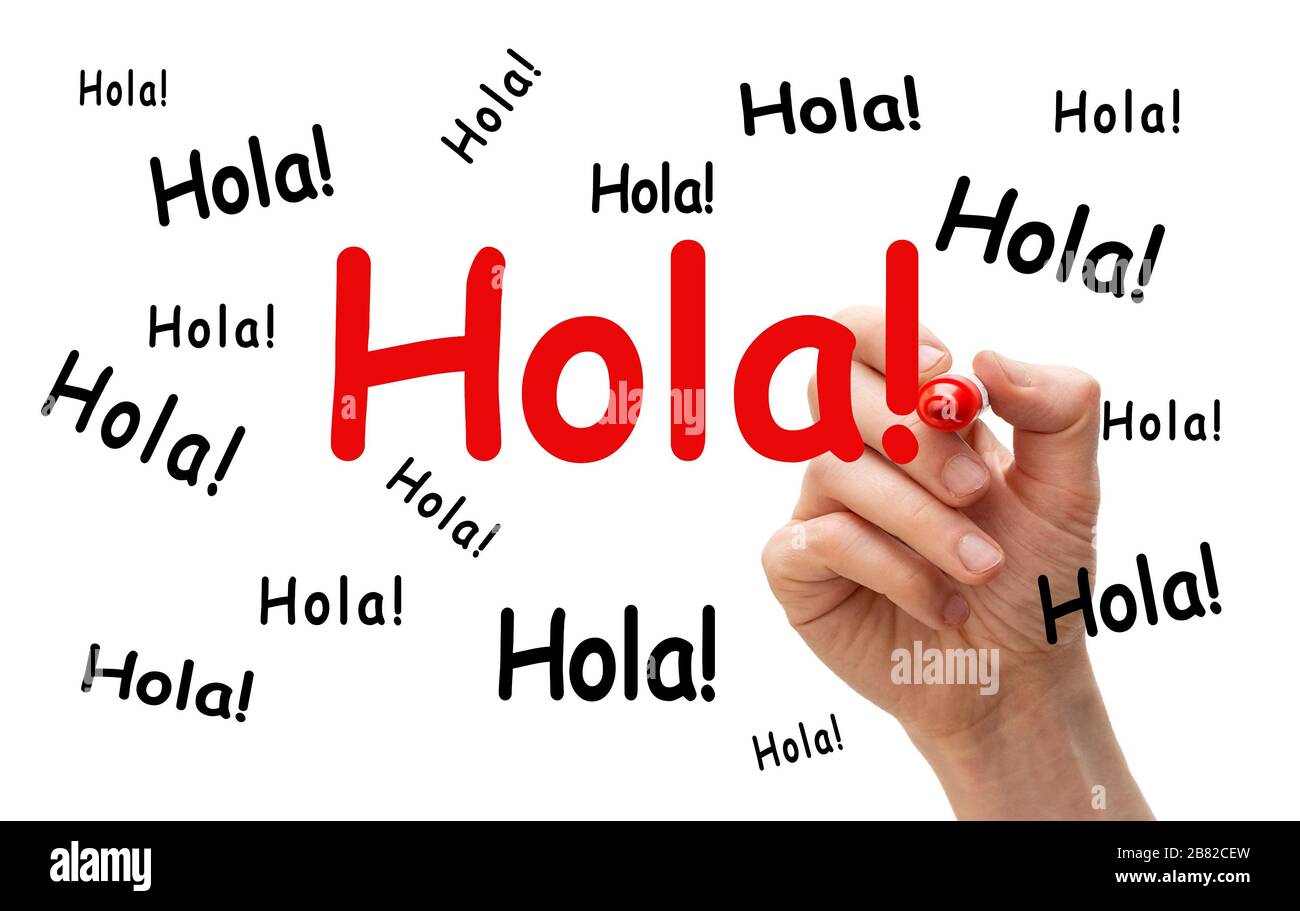What does hola imply in Spanish? It is a easy query, but surprisingly wealthy in cultural context. Past a mere greeting, understanding “hola” reveals insights into Spanish-speaking etiquette and the nuances of on a regular basis communication. This exploration delves into the which means of “hola,” its utilization throughout totally different contexts, and the delicate methods it shapes interactions.
In Spanish-speaking cultures, “hola” is greater than only a phrase; it is a cornerstone of social interplay. It is the primary sound you hear when getting into a store, the preliminary greeting amongst mates, and a well-known signifier of connection. This in-depth look will discover how the phrase’s versatility displays the varied social material of Spanish-speaking communities. We’ll examine the other ways “hola” is used, from formal to casual settings, and supply sensible examples to reinforce your understanding.
Hola is a typical Spanish greeting, and understanding its nuances can considerably improve your interactions with Spanish audio system. This complete information delves into the which means of hola, exploring its utilization, variations, and cultural context.
The Basic Which means of Hola
At its core, hola means hiya in Spanish. It is a versatile greeting, acceptable for many conditions, from informal encounters to formal introductions.
Past the Fundamentals: Context Issues
Whereas hola is a common greeting, its use is not all the time simple. The tone and supply can subtly shift the which means. For instance, a rapid-fire ” ¡Hola!” may convey a extra informal and energetic greeting, whereas a slower, extra deliberate ” Hola” could be utilized in a extra formal setting.
Cultural Nuances
The cultural context additionally performs a task. In some areas, a extra elaborate greeting could be anticipated. For instance, a easy ” Hola” could be enough in an off-the-cuff setting, however a extra formal greeting could be most popular when addressing somebody for the primary time in knowledgeable setting. [See also: How to Greet People in Different Spanish-Speaking Cultures]
Variations and Associated Phrases
Whereas hola is the commonest greeting, there are different methods to say hiya in Spanish. These variations usually mirror regional dialects or particular social contexts.
Different Greetings
- Buenos días: Good morning
- Buenas tardes: Good afternoon
- Buenas noches: Good night/Good evening
These options present extra particular greetings, providing a extra nuanced technique to tackle the time of day. Understanding when to make use of these variations can show a deeper understanding of the Spanish language and tradition.
Frequent Misunderstandings and Errors
Misunderstandings can come up when assuming hola is all the time interchangeable with different greetings. Context is essential, and understanding the suitable greeting for the state of affairs is essential to efficient communication.

Avoiding Frequent Errors, What does hola imply in spanish
- Utilizing hola when a extra formal greeting is predicted.
- Utilizing hola inappropriately, similar to in a really formal setting.
By taking note of the subtleties of the state of affairs, you’ll be able to keep away from these frequent errors and talk extra successfully.
Utilizing Hola in Totally different Contexts
The appropriateness of utilizing hola relies upon closely on the context. A easy ” hola” works effectively in informal settings, however in additional formal conditions, a extra formal greeting could be extra appropriate.
Formal vs. Casual Settings
In skilled settings, utilizing a extra formal greeting similar to buenos días or buenas tardes is usually advisable. In casual settings, a easy ” hola” is completely acceptable.
Examples and Actual-World Functions: What Does Hola Imply In Spanish
As an example the sensible software of hola, let’s take into account a number of situations.

Situation 1: Assembly a Good friend
“ Hola, ¿cómo estás?” (Whats up, how are you?)
Situation 2: Coming into a Store
“ Hola, ¿en qué puedo ayudarle?” (Whats up, how can I provide help to?)
[Image: Table comparing how hola is used in different scenarios]
Key Takeaways
Understanding the delicate nuances of hola is essential for efficient communication in Spanish. From its elementary which means to its variations and cultural context, this information gives a complete overview of this important Spanish greeting.
Understanding when and tips on how to use hola, together with different greetings, enhances your interactions with Spanish audio system, showcasing your respect for his or her language and tradition.
Additional Exploration
To deepen your understanding of Spanish greetings and etiquette, discover these associated matters:
- [See also: Spanish Greetings and Introductions]
- [See also: Common Spanish Phrases for Different Occasions]
By persevering with to study and observe, you will acquire a deeper appreciation for the wealthy tapestry of Spanish language and tradition.
Able to increase your Spanish vocabulary? Go away your questions or feedback under!
In conclusion, “hola,” whereas seemingly easy, is a multifaceted component of Spanish communication. Its utilization extends past a mere greeting, embodying social cues, cultural context, and the delicate artwork of human interplay. This exploration has supplied a complete overview of the which means and software of “hola,” highlighting its position in shaping social dynamics throughout the Spanish-speaking world. Understanding “hola” unlocks a deeper appreciation for the richness and complexity of the Spanish language and tradition.
Question Decision
Is “hola” all the time used as a greeting?
Whereas primarily a greeting, “hola” can generally be utilized in different contexts, similar to expressing shock or acknowledgement. Its main perform, nevertheless, is as a well mannered and pleasant greeting.
Are there other ways to say “hiya” in Spanish?
Sure, whereas “hola” is the commonest, different greetings exist, similar to “buenos días” (good morning), “buenas tardes” (good afternoon), and “buenas noches” (good night). The selection depends upon the time of day and the extent of ritual.
How does the tone of voice have an effect on the which means of “hola”?
The tone of voice considerably influences the interpretation of “hola.” A cheerful, upbeat tone conveys friendliness, whereas a extra subdued tone may suggest a extra reserved greeting. Context is essential, however tone provides one other layer of which means.




